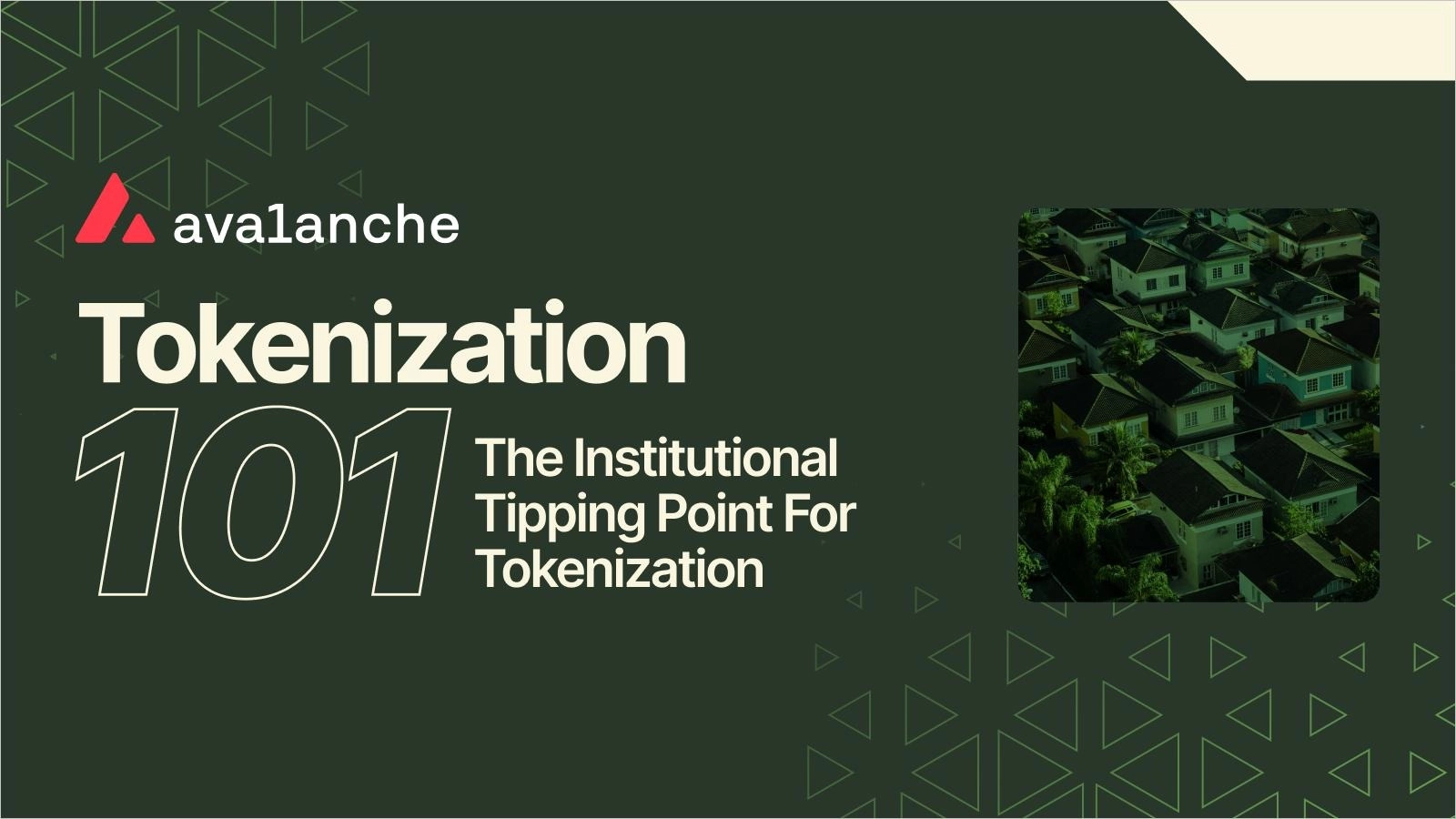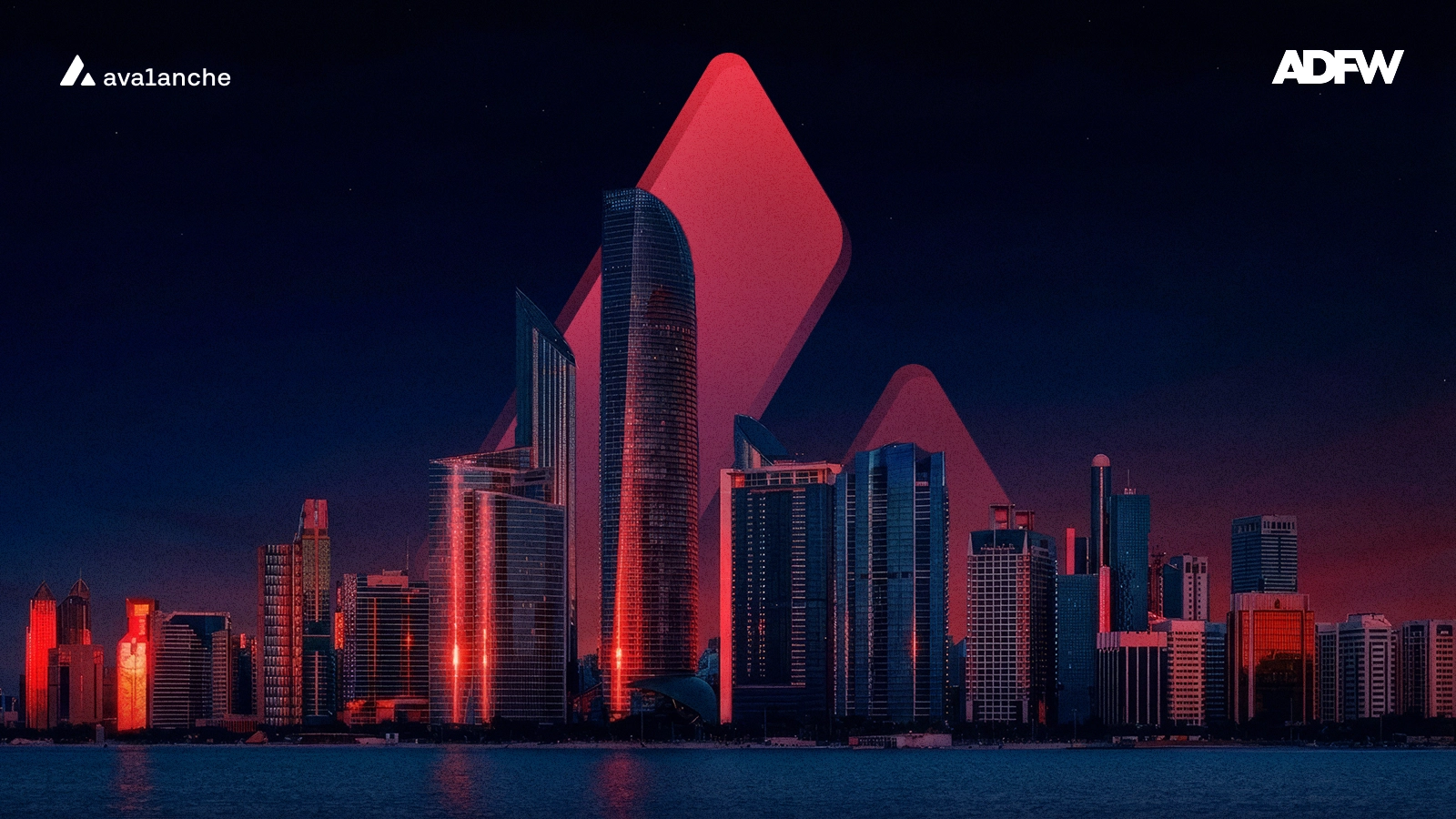Tokenization 101: The Institutional Tipping Point For Tokenization
Tokenization 101: The Institutional Tipping Point For Tokenization
Dec 4, 2024 / By Avalanche / 6 Minute Read

The latest Tokenization 101 explores how blockchain is transforming traditional finance through tokenized assets, driving institutional adoption, and unlocking new opportunities for capital markets.
Authored by Morgan Krupetsky, Head of Institutions & Capital Markets, Ava Labs
In the blockchain industry, people often say, "the institutions are here," referring to traditional finance (TradFi) and regulators being more visible and engaged with the space. This increased participation from major banks, investment firms, regulatory bodies, and other established organizations suggests they have started recognizing blockchain as potentially worth integrating into their operations and/or facilitating investment into cryptocurrencies as an asset class.
Signifying a shift from blockchain being primarily reserved for tech enthusiasts and “crypto natives,” a movement towards more mainstream adoption where established institutions are investing in and providing regulatory guardrails for the technology is slowly becoming a reality–highlighting growing legitimacy and acceptance of blockchain as a component in advancing the intersection of finance and technology.
Alongside the growth of on-chain activity associated with the previous crypto bull market cycle, the industry saw a resurgence in TradFi engaging in blockchain-based initiatives; over time, innovative banks, asset managers, and financial market infrastructures (FMIs) have been launching a variety of proofs of concept, pilots, and, in select cases, in-production deployments.

Inline image from: Tokenization 101: The Institutional Tipping Point For Tokenization
Leveraging a variety of blockchain infrastructure and networks, these initiatives, as recapped in the Tokenized Asset Coalition’s State of Tokenization Report: 2024 Outlook, have fallen into three general categories: 1) on-chain asset issuance (e.g., blockchain-native bonds), 2) the tokenization of funds (e.g., private credit and venture), and 3) the tokenization of cash and cash equivalents (e.g., stablecoins and money market funds, or Money Market Funds (MMFs).
To date, these initiatives have largely focused on institutions as asset issuers, managers, and administrators. With public, permissionless blockchains attracting over $170B in stablecoin market cap to date, it’s no wonder the “institutions are here,” or, at a minimum, are peering over the TradFi fence to analyze their opportunity set.
As the crypto winter started in mid-2022 and Fed Funds rates reached multi-year highs in 2023, the opportunity emerged to offer crypto-uncorrelated “real-yield” via “stable, real-world assets (RWAs),” like MMFs, to crypto natives. Doing so allowed their on-chain cash positions to start earning yield and diversified investments from likely more volatile native token exposure. Between chain expansions and new fund deployments from several top-tier asset managers like Franklin Templeton, BlackRock, and WisdomTree–with many others in the works–2024 has become the year of the on-chain MMF.
Now, with US rate cuts priced in for this year and a slew of assets being tokenized across the risk and liquidity spectrum (e.g., private credit, equity, real estate, etc.), questions around product-market fit, demand, and distribution remain.
Asset management is all about scale. The companies and products that will likely win out will likely be those who offer products from a combination of high-quality issuers with additional capabilities and utility within regulatory confines (e.g., collateral mobility, peer-to-peer transfers, instant liquidity, daily interest payments, etc.), with lower fee structures, etc.
While retail customers may have direct access to many of these offerings, B2B or B2B2C flows will be the substantial drivers of institutional size and scale of on-chain MMFs and other traditional RWAs–institutions as asset purchasers and distributors.
As I see it, there are a few potential paths to broader buy-side institutional participation:
Crypto Native Institutions (B2B): These are the likes of large DAOs, protocols, and foundations that have either been buying or assessing whether to buy RWAs (again, mostly liquid assets so far). Examples of programs established for this purpose have been the Avalanche Foundation’s Vista Program, Arbitrum’s STEP, and MakerDAO’s Spark Tokenization Grand Prix. There is a world where–similar to Amazon’s initial focus on books and Facebook’s initial focus on college students–this initial focus on crypto natives expands to much wider adoption. In this world, the RWA startups in this space will need to have a clear vision of what they are pursuing and be able to sustain their competition as adoption takes hold.
Alternative Asset Managers (B2B): While few and far between, there’s a cohort of alternative asset managers who understand how to evaluate private market opportunities and appreciate the value that blockchain can bring to asset origination and administration. Given the similarities with their traditional, off-chain mandates, they’re open to assessing and structuring on-chain deals involving debt and equity financing. The more that alternative lenders can recognize blockchain-enabled platforms–e.g., Arf x Huma, Intain, Fizit, etc.–as simply the next wave of FinTech originators (similar to those who really took off post-GFC), the faster the on-chain ecosystem sets itself up to attract this type of traditional, off-chain capital. For more information, check out this blog, which reviews the growth of asset-backed finance via blockchain-enabled opportunities.
Neobanks or Embedded Finance Startups (B2B2C): A recent stablecoin survey by Castle Island Ventures and BH Digital found that non-crypto uses such as access to dollars, yield generation, and transaction purposes were popular among respondents–all of which were based in Nigeria, Indonesia, Turkey, Brazil, and India. Especially in emerging markets, where the local population doesn’t have ready access to the banking system or may not trust incumbents, neobanks and embedded finance startups have the luxury of newly architecting their back-end plumbing to leverage blockchain, tokenization, and smart contracts. As such, they may really have an edge in capturing market share. By offering new products and services, like USD-based savings accounts, instant P2P payments, or the ability to buy and sell assets like US equities or tap into private market investments with lower minimums, these startups have an opportunity to gain market share while inherently driving the adoption of tokenized assets.
There’s no doubt the blockchain space has generated interest, attention, and preliminary adoption among innovative institutional players. Unlike in previous cycles, this one brings to bear more mature infrastructure for tokenized assets, the advent of DeFi enabling asset utility and composability, and increasingly more Wall Street executive buy-in.
Looking ahead, the key to seeing a step change in adoption will be the industry’s ability to draw institutional levels of capital and liquidity to the RWA space. To get there, those of us focused on tokenization and blockchain infrastructure can help lead the way through our educational and regulatory advocacy efforts, better understanding institutional end-user operations, pain points, and mandates to purpose-build for those focus areas, and by articulating business cases, implications, and advantages of what we’re building in less technical and more practical terms.
Disclaimer: All of these are my personal views and not the views of my employer. The content contained in this post does not constitute financial or investment advice whatsoever and is for informational purposes only.




